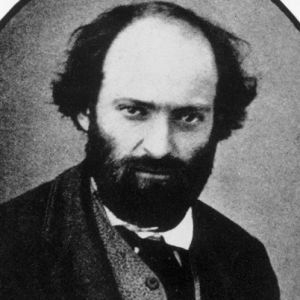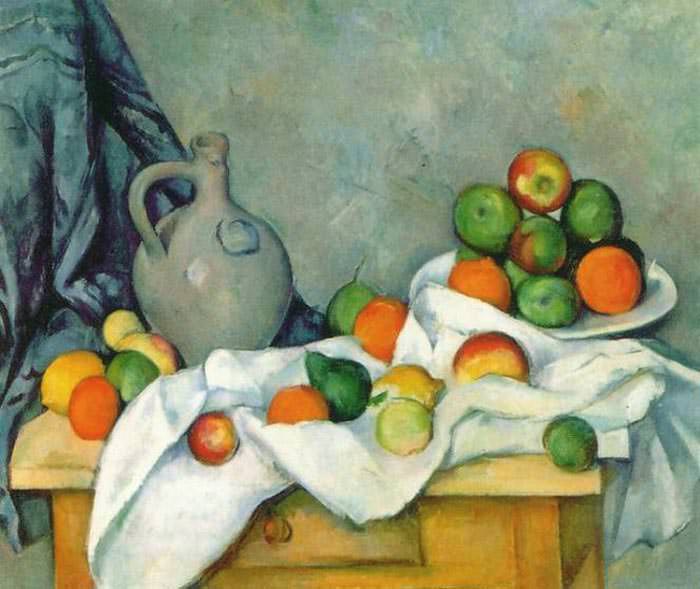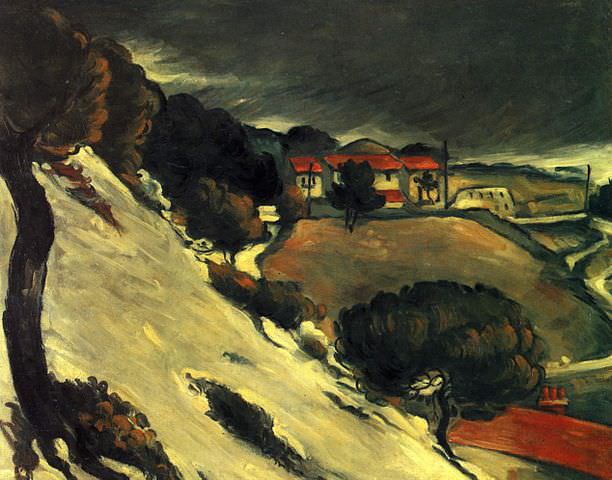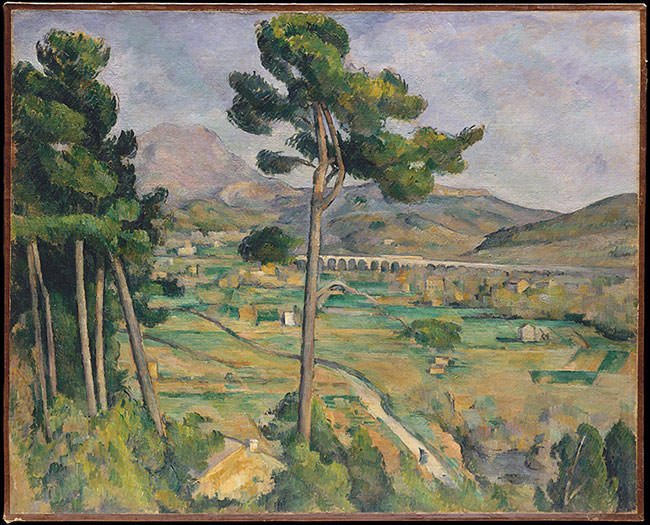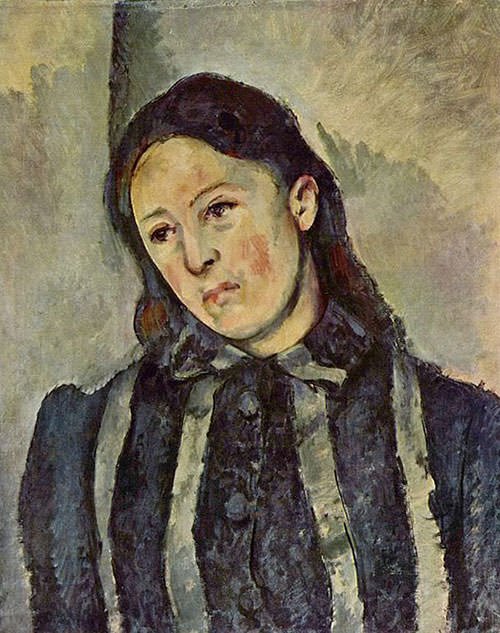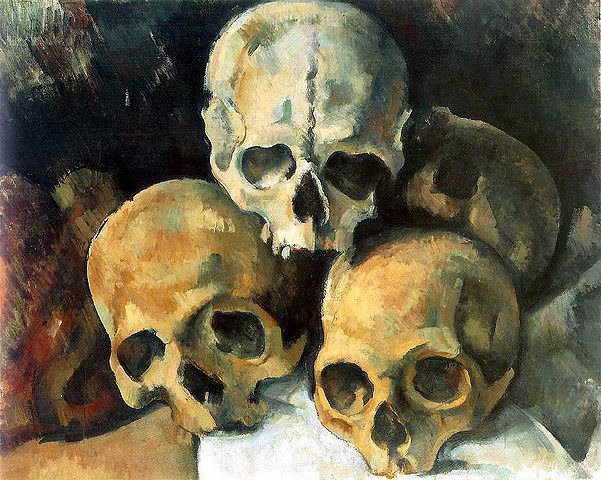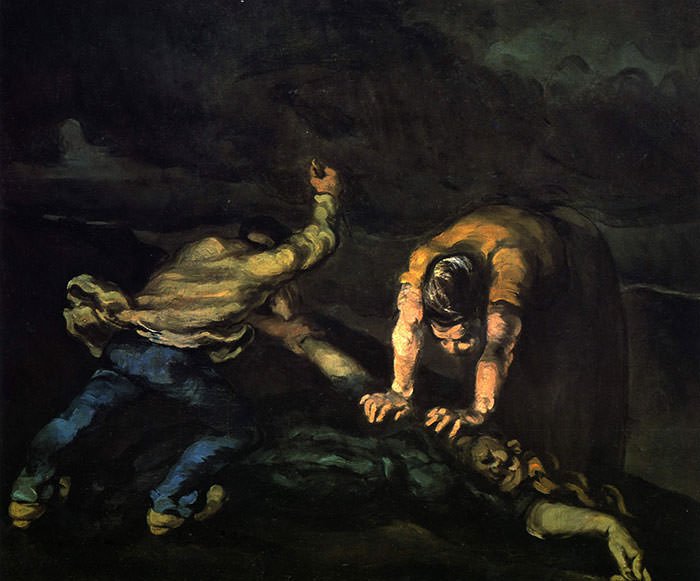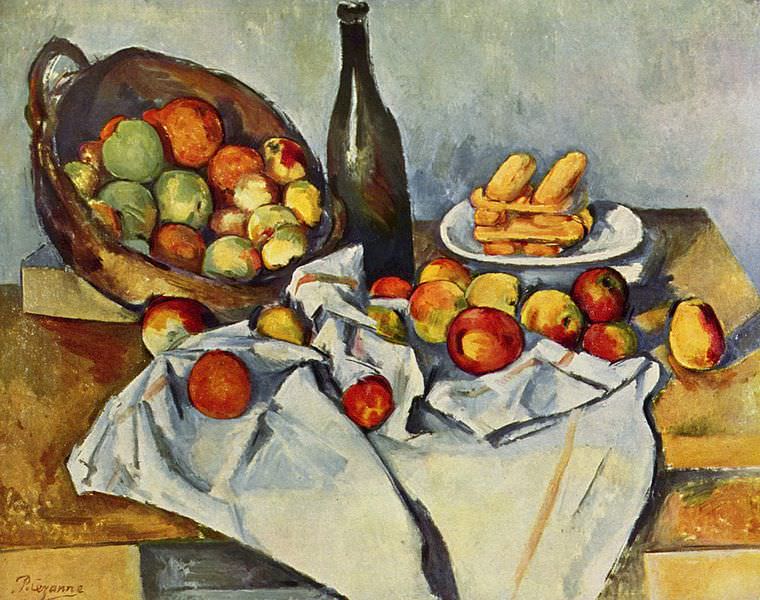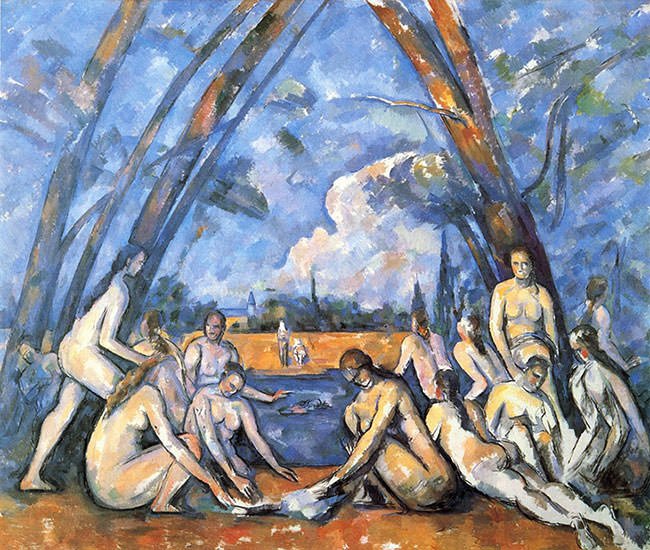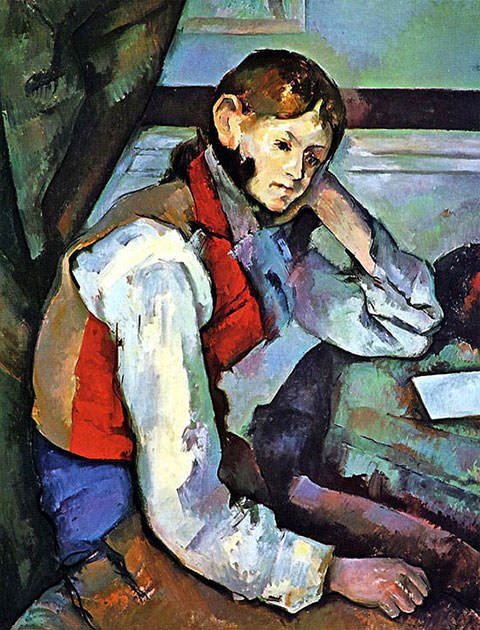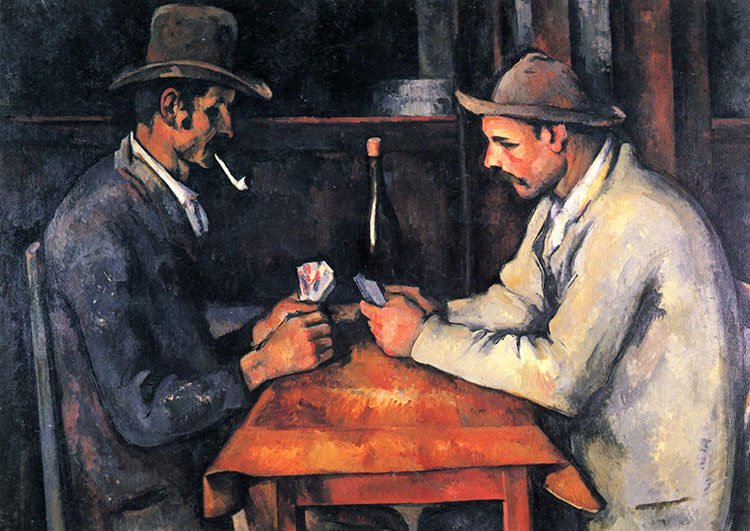- Overview
-
Paul Cézanne (19 January 1839 – 22 October 1906) was a French artist and Post-Impressionist painter whose work laid the foundations of the transition from the 19th-century conception of artistic endeavor to a new and radically different world of art in the 20th century. Cézanne's often repetitive, exploratory brushstrokes are highly characteristic and clearly recognizable. He used planes of colour and small brushstrokes that build up to form complex fields. The paintings convey Cézanne's intense study of his subjects.
Cézanne is said to have formed the bridge between late 19th-century Impressionism and the early 20th century's new line of artistic enquiry, Cubism. Both Matisse and Picasso are said to have remarked that Cézanne "is the father of us all."
His father was a successful banker, who wished him to pursue a ‘respectable’ career. To please his father, between 1859 and 1861, Paul attended the law school of the University of Aix. However, in 1861, he became disillusioned with this orthodox career path and dropped out to pursue his life’s passion – art.
- Career
-
- Cézanne's early work is often concerned with the figure in the landscape and includes many paintings of groups of large, heavy figures in the landscape, imaginatively painted.
- Later in his career, he became more interested in working from direct observation and gradually developed a light, airy painting style. Nevertheless, in Cézanne's mature work there is the development of a solidified, almost architectural style of painting.
- His works in the period, 1861-1870 are characterized by dark colours and the heavy use of black. They differ sharply from his earlier watercolours and sketches at the École Spéciale de dessin at Aix-en-Provence in 1859, and their violence of expression is in contrast to his subsequent works.
- In 1866–67, inspired by the example of Courbet, Cézanne painted a series of paintings with a palette knife. He later called these works, mostly portraits, une couillarde.
- Among the couillarde paintings are a series of portraits of his uncle Dominique in which Cézanne achieved a style that "was as unified as Impressionism was fragmentary".[34] Later works of the dark period include several erotic or violent subjects, such as Women Dressing (c. 1867), The Rape (c. 1867), and The Murder (c. 1867–68), which depicts a man stabbing a woman who is held down by his female accomplice.
- After the start of the Franco-Prussian War in July 1870, Cézanne and his mistress, Marie-Hortense Fiquet, left Paris for L'Estaque, near Marseilles, where he changed themes to predominantly landscapes.
- For a long time afterwards, Cézanne described himself as Pissarro's pupil, referring to him as "God the Father", as well as saying: "We all stem from Pissarro.” Under Pissarro's influence Cézanne began to abandon dark colours and his canvases grew much brighter.
- From 1890 until his death he was beset by troubling events and he withdrew further into his painting, spending long periods as a virtual recluse. His paintings became well-known and sought after and he was the object of respect from a new generation of painters.
- Cézanne's early work is often concerned with the figure in the landscape and includes many paintings of groups of large, heavy figures in the landscape, imaginatively painted.
- Legacy
-
Cézanne's works were rejected numerous times by the official Salon in Paris and ridiculed by art critics when exhibited with the Impressionists. Yet during his lifetime Cézanne was considered a master by younger artists who visited his studio in Aix.
After Cézanne died in 1906, his paintings were exhibited in a large museum-like retrospective in Paris, September 1907. The 1907 Cézanne retrospective at the Salon d'Automne greatly affected the direction that the avant-garde in Paris took, lending credence to his position as one of the most influential artists of the 19th century and to the advent of Cubism.
Inspired by Cézanne, two of the younger artists wrote:
Cézanne is one of the greatest of those who changed the course of art history . . . From him we have learned that to alter the coloring of an object is to alter its structure. His work proves without doubt that painting is not—or not any longer—the art of imitating an object by lines and colors, but of giving plastic [solid, but alterable] form to our nature. (Albert Gleizes and Jean Metzinger in Du "Cubisme", 1912)
Cézanne's explorations of geometric simplification and optical phenomena inspired Picasso, Braque, Metzinger, Gleizes, Gris and others to experiment with ever more complex multiple views of the same subject and eventually to the fracturing of form. Cézanne thus sparked one of the most revolutionary areas of artistic enquiry of the 20th century, one which was to affect profoundly the development of modern art. Picasso referred to Cézanne as "the father of us all" and claimed him as "my one and only master!" Other painters such as Edgar Degas, Pierre-Auguste Renoir, Paul Gauguin, Kasimir Malevich, Georges Rouault, Paul Klee, and Henri Matisseacknowledged Cézanne's genius.
A prize in his memory, called the Cézanne medal, is granted by the city of Aix en Provence, in France for special achievement in the arts.
Cézanne's painting The Boy in the Red Vest was stolen from a Swiss museum in 2008. It was recovered in a Serbian police raid in 2012.
The 2016 film Cézanne and I explores the friendship between the artist and Émile Zola.
- On View
-
- National Gallery of Art East Building, Washington D.C
- Museum of Modern Art, New York City
- Musee d’Orsay, Paris
- Art Institute of Chicago, Chicago
- Barnes Foundation, Philadelphia
- Los Angeles County Museum, Los Angeles
- Museum of Fine Arts, Boston
- The phillips Collection, Washington DC
- Metropolitan museum of Art, New York City

